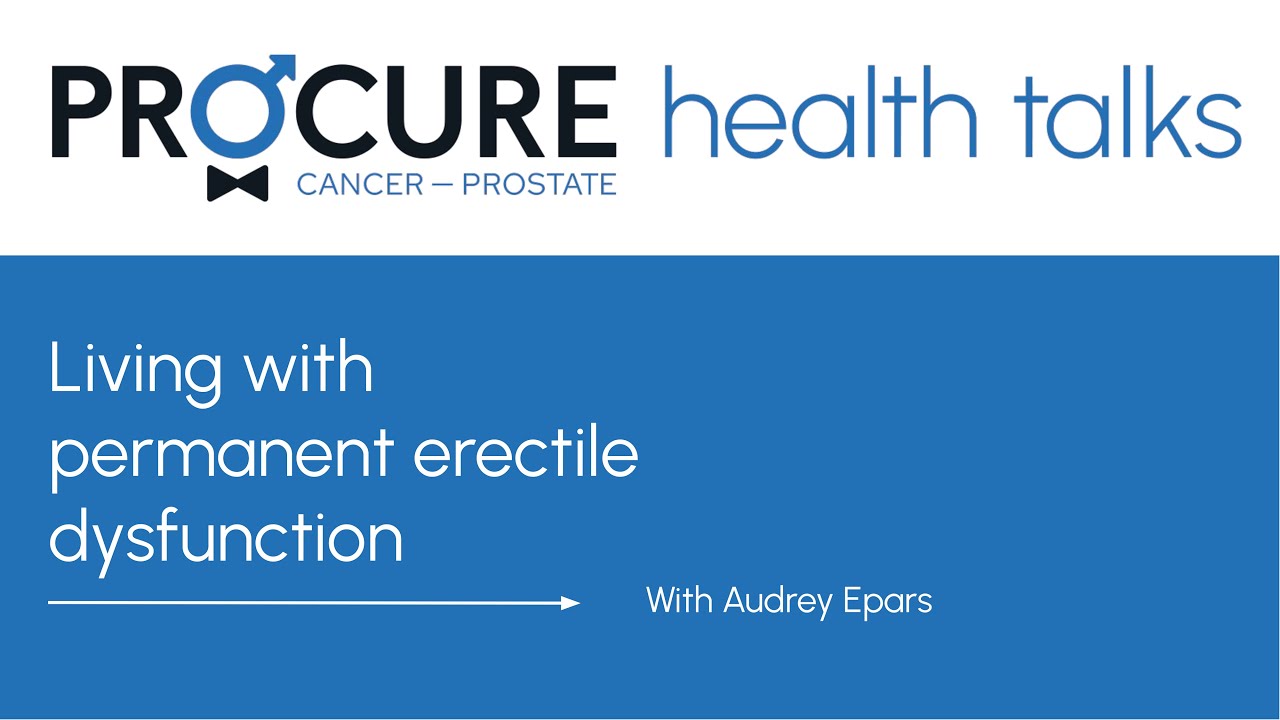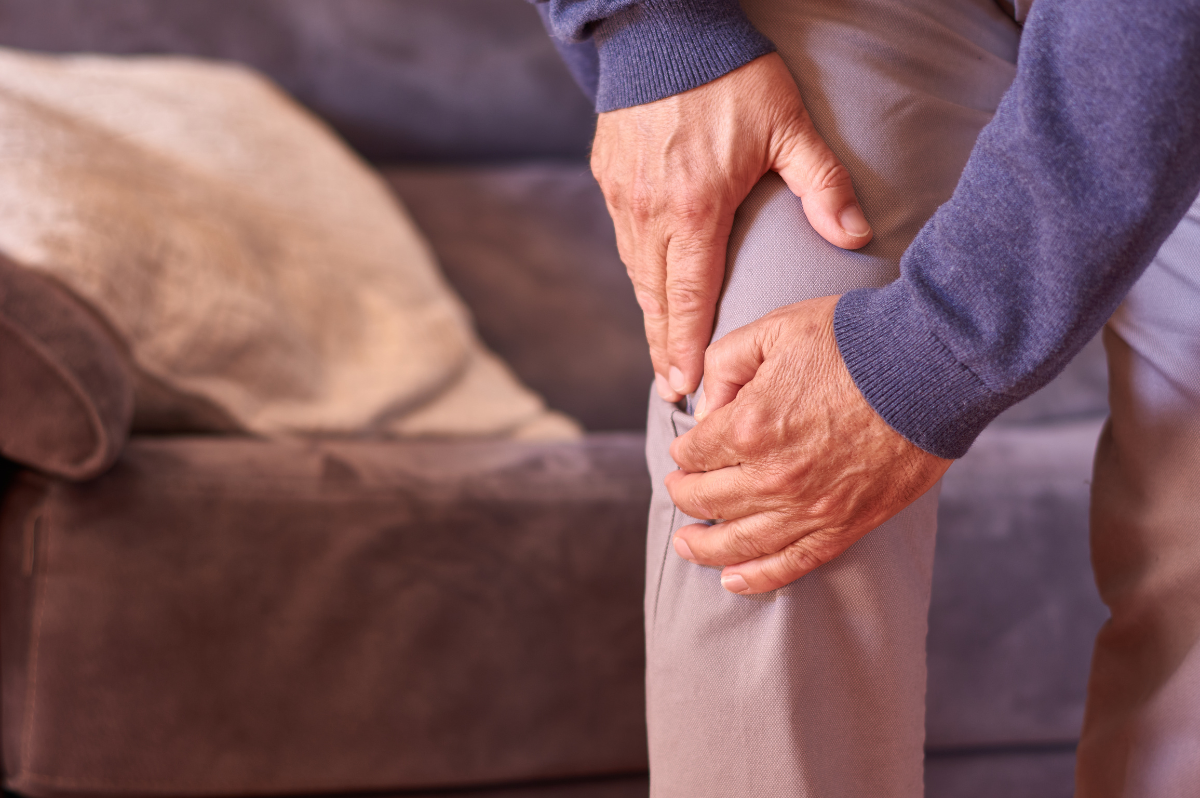Prostate Cancer Awareness Month – Physical activities
- Prostate Cancer Awareness Month – Physical activities
- Commitment #1
- Commitment #2
- Commitment #3
- Commitment #4
- Commitment #5
Prostate Cancer Awareness Month – Physical activities
21 Days to Wellness

For Prostate Cancer Awareness Month, we are taking the opportunity to encourage you to make small changes to enhance your overall well-being.
As maintaining a healthy and vibrant lifestyle is crucial for your quality of life (regardless of your prostate cancer diagnosis), we present below five health-beneficial behaviors. We invite you to consider which one you find most achievable to adopt in your daily routine over the next 21 days, at a time that suits you perfectly. Each of these behaviors is accompanied by additional information and practical tips to guide you in your journey and facilitate your choice.
Staying Active: Move to Live, Live to Move
Physical activity is essential throughout life, especially before, during, and after prostate cancer treatment.
It improves the management of this condition and plays a crucial role in preventing serious chronic diseases, such as cardiovascular diseases and diabetes. Furthermore, it promotes a healthy weight, enhances sleep quality, and strengthens the immune system, thereby increasing the body’s resilience against health challenges. Every step you take and every movement you choose gives you energy and brings you closer to overall well-being.
If you’re considering starting an exercise program, it’s advisable to consult a healthcare professional, especially if you have pre-existing health issues. Don’t hesitate to seek the assistance of a kinesiologist or physiotherapist to support you on your journey. For most individuals, engaging in physical activity before, during, and after cancer treatment is generally safe. If you’re unsure, consult your medical team for guidance.
Menu
COMMITMENT #1

I commit to taking a 5-minute active break every hour to stand up, stretch, and move.
Modifiable behavior: Prolonged sitting
To reduce sedentary behavior and avoid prolonged sitting, incorporate simple physical activities throughout the day. Take short active breaks every hour. Get creative in finding ways to move more in your daily routine. Of course, it might sound easier said than done, but let’s look at some basic principles below to guide you.
Excessive sedentary behavior, characterized by prolonged periods of sitting, poses numerous health risks, including back and shoulder pain, poor blood circulation, reduced muscle activity, and a slowed metabolism. Moreover, it’s linked to an increased risk of cardiovascular diseases, type 2 diabetes, musculoskeletal disorders, and certain cancers. Additionally, prolonged sitting can worsen urinary symptoms associated with prostate diseases.
- A person who sits for more than three hours a day and engages in less than 30 minutes of movement is considered sedentary.
- Only about half of the Quebec population meets the minimum recommended level of physical activity (150 minutes of moderate activity per week), and 30% are completely sedentary.
- In Canada, physical inactivity is now the fourth leading cause of premature death, following hypertension, smoking, and diabetes.
- The average Canadian adults are sedentary for 9.6 hours of their day, excluding meal and sleep hours.
Sedentary behavior is a wakeful state characterized by very low energy expenditure. Sedentary behaviors can occur while sitting, lying down, or standing without movement. For example:
- Traveling in a motorized vehicle.
- Sitting to read, write, perform office work, study, or spend time in front of a screen (TV, video games, computer).
- Being a spectator at a sports event.
- Standing in a queue or line.
- Lying down to read or watch TV.
Other benefits of avoiding prolonged sitting:
- You reduce your risk of developing varicose veins.
- You maintain your flexibility and joint mobility.
- You increase your energy and vitality.
Don’t know where to start? Here are some practical tips:
- Use alarms on your phone, computer, or a simple timer to remind yourself to stand up and move every hour.
- When watching TV, use commercial breaks to stand up, walk around the room, or do some light exercises.
- Perform exercises like arm and leg stretches or neck rotations to stay active even while sitting.
- Take advantage of phone calls to stand up and walk around the room.
- Opt for parking spaces farther away to encourage a bit more walking.
- Whenever possible, choose stairs over the elevator. It’s an excellent way to incorporate exercise into your daily routine.
- Taking the bus or subway? Get on one stop after your usual station or get off a bit before your destination, so you can walk part of the way.
- At work, consider walking meetings with colleagues or standing meetings.
- Explore activities that interest you: yoga, tai chi, swimming, dancing, water sports (kayaking, paddleboarding, etc.), hiking, cycling – the options are plentiful and there’s something for everyone!
Blog posts to read
Additional resources
- Click on the links below to access more information to help you achieve your commitment:
- Sitting for too long can kill you, even if you exercise (CBC)
- Prolonged sitting is bad for your health (CTV News)
- In French: Pour une reprise sécuritaire de vos activités (Centre intégré de santé et de services sociaux de Chaudière-Appalaches)
COMMITMENT #2

I commit to gradually increasing the time I dedicate to physical activity up to 30 minutes per day.
Modifiable behavior: Neglecting to incorporate exercise into your routine
According to all studies, it is recommended to include 30 minutes of moderate-intensity physical exercise, totaling 150 minutes per week, along with strength, flexibility, and balance exercises. By incorporating exercise into your daily routine, you strengthen your muscles, bones, and cardiovascular system, while also promoting the release of endorphins that improve your mood and reduce stress. Of course, it might sound easier said than done, but let’s look at some basic principles below to guide you.
Because it’s essential to find ways to maintain our health, mobility, and independence. Moving brings benefits. The more active you are, the more you’ll feel the health benefits in terms of your mood, focus, confidence, and resilience, as well as improved sleep, regardless of your starting level. Moreover, physical activity can help you feel better when receiving or recovering from prostate cancer treatment.
Did you know that physical activity isn’t limited to sports? It encompasses all body movements generated by muscles, resulting in energy expenditure greater than that during rest. So, being active doesn’t necessarily mean engaging in intense sports or going to the gym.
For instance, everyday physical activities include:
- Active commuting (walking, cycling, using stairs)
- Household chores (cleaning, DIY tasks, gardening)
- Physical tasks at work (lifting, moving heavy items, hammering, operating machinery, etc.)
It’s crucial to choose activities that you enjoy, as that’s the best way to sustain them. You can break down the recommended 30 minutes into consecutive 10-minute segments throughout the day. Even short 5-minute sessions multiple times a day are beneficial for your body and will help you achieve your physical activity goals.
To maximize health benefits, it’s important to add some intensity to physical efforts. In fact, based on the effects it has on the body, physical activity can be classified as light, moderate, or vigorous intensity. Therefore, it’s recommended to prioritize moderate-intensity physical activities that require increased effort for breathing and elevate heart rate.
Here are some examples:
- Walking at a faster pace than usual.
- Using stairs by climbing up and down.
- Biking or swimming.
- Activities like vacuuming, shoveling snow, mowing the lawn, gardening, etc.
Other benefits of increasing your daily physical activity to 30 minutes:
There are numerous advantages to moving each day, particularly for men battling prostate cancer due to the side effects, such as those related to hormone therapy.
Physical activity improves your:
- Muscle strength and mass
- Self-esteem
- Sleep quality
- Cognitive function (e.g., concentration)
Simultaneously, it reduces your:
- Risk of cardiovascular diseases
- Risk of osteoporosis
- Body fat percentage
- Fatigue
- Levels of stress, anxiety, and depression.
Not sure where to start?
Seize opportunities to move: Even if you’re not an athlete, you can integrate exercise into your daily life. For instance, choose walking or biking for short trips instead of using your car, like fetching your mail, visiting the local store, or going to a friend’s house a few blocks away.
Identify meaningful activities: Make a list of activities that matter to you. Can you include them in the recommended 30 minutes of daily physical activity. Examples could be:
- Playing in the pool with your grandchildren.
- Participating in a charity 5k walk next fall.
- Being able to climb stairs independently.
Set goals: Ask yourself, what do you want to accomplish in the next 21 days? Start with smaller goals leading up to your main objective. For instance:
- Begin by walking 20 minutes three times a week.
- Gradually increase to walking 30 minutes four times a week.
- Ultimate Goal: Aim for 30 minutes of daily physical activity while incorporating strength training exercises at least twice a week. Don’t forget to allocate a few minutes for stretching before and after exercising to warm up and relax your muscles.
Individual or group activities: Do you prefer solo or group activities? If group activities interest you, reach out to local organizations, recreation centers, and community clubs to see what’s available. You might be surprised by the variety of programs offered.
Gradual and regular routine: Plan a suitable, gradual, and consistent physical activity regimen. Even if you feel tired, untrained, older, or heavier, remember that every effort, no matter how small, contributes to building a path towards renewed well-being.
- Start Slowly: Begin gently and gradually increase the duration and/or intensity of your efforts.
- Embrace Progress: Every little step towards physical activity is a significant stride forward.
- Believe in yourself and dare to move more than yesterday!
Additional resources
- Click on the links below to access more information to help you achieve your commitment:
- Need ideas to get started? Click here for inspiration.
- You can consult a healthcare professional, especially a kinesiologist or physiotherapist, to find a program that suits you. Visit the Quebec Cancer Foundation website to discover available resources in your region.
- Here are two free and accessible Quebec resources, designed to be user-friendly and enriched with video capsules that prioritize the four essential pillars of exercise: endurance, strength, balance, and flexibility.
- The M.O.V.E. 50+ Program: Designed for individuals aged 50 and over by kinesiologists, this simple and quick tool will guide you in choosing an exercise program tailored to your physical condition, ensuring a safe and enjoyable practice. For example, here are some exercises shown in images.
- The SAFE program (senior adult fitness exercises). Another straightforward tool adapted to your needs. While aimed at seniors, this program can help anyone with a sedentary lifestyle or who is affected by prostate cancer treatments, such as fatigue, lack of energy, etc.
COMMITMENT #3

I commit to engaging in strength training exercises twice a week.
Modifiable behavior: Neglecting muscle work
Incorporating two strength training sessions per week promotes muscle growth, enhances posture and stability, strengthens bones, and helps prevent injuries and fractures. It also contributes to boosting metabolism, thereby supporting weight loss and weight management. Of course, while this might seem straightforward, let’s delve into some basic concepts below to guide you.
Neglecting to engage in strength training exercises can lead to loss of muscle strength, joint and bone stability, and a less active metabolism. This compromises injury prevention, fracture prevention, prevention of muscle mass loss related to prostate cancer treatments like hormone therapy, and weight management, thereby limiting long-term health benefits.
- As we age, the body undergoes natural changes, including sarcopenia, which affects muscle mass.
- In addition to the natural aging process, other factors such as insufficient physical activity, hormonal imbalances, poor nutrition, and underlying health issues can accelerate the loss of muscle mass.
- Loss of muscle mass is often associated with falls.
Sarcopenia is a medical term that refers to the progressive loss of muscle mass and strength that typically occurs with aging.
The production of muscle proteins decreases over the years, leading to a gradual loss of muscle mass and strength. Muscle fibers may contract less efficiently, resulting in weakness and decreased muscle function.
This decline in muscle mass can lead to poor posture, reduced mobility, and increased vulnerability to injuries. Sarcopenia can affect the ability to perform daily activities such as climbing stairs, lifting heavy objects, or even getting up from a chair.
Adopting a regular strength training exercise routine can slow down sarcopenia by stimulating muscle growth and maintenance, strengthening bones, and improving their strength and function.
Other benefits of engaging in strength training exercises twice a week:
Strength training exercises have a significant impact on mental health, positively contributing to several aspects of emotional well-being.
- Stress and anxiety reduction: Similar to endurance exercises (cardio or aerobic), they promote the release of endorphins, natural hormones that act as natural painkillers.
- Mood improvement: They can help alleviate feelings of sadness and irritability.
- Enhanced self-esteem: They can strengthen self-confidence and self-esteem. Visible progress in strength and physical appearance can enhance a positive body image and a better self-perception.
- Cognitive stimulation: As they require following routines and sequences, they can enhance mental coordination.
- Social interaction: Participating in group activities can promote social interactions, thereby reducing isolation or loneliness.
Not sure where to start?
Here are some examples of simple exercises that can be integrated into a weekly routine to help strengthen muscles, improve strength and mobility, and contribute to an active and healthy lifestyle. Stretching helps maintain flexibility and prevent muscle stiffness.
- Stand with your back against the wall, then slowly lower yourself by bending your knees as if you were sitting on an invisible chair. Hold the position for a few seconds, then stand up. This exercise works the muscles of the legs and buttocks.
- Sit on a chair with your back straight. Extend one leg in front of you at hip height, then slowly lower it. Repeat the movement for each leg. This strengthens the muscles of the thighs.
- Stand with a water bottle in each hand. Slowly raise your arms to the sides until they are horizontal, then lower them. This exercise works the shoulders.
- Sit on a chair, hold a water bottle in one hand, and bend your elbow to 90 degrees. Slowly extend your arm in front of you, then bend it again. This strengthens the arm muscles.
- Stand, then slowly raise your heels off the floor while standing on your toes. Lower gently. This strengthens the calves.
You can also do strength training exercises with bands, dumbbells (weights, water bottles, canned goods), alone, in a group, or online by watching pre-recorded videos.
Additional resources
- Click on the links below to access more information to help you achieve your commitment:
- Exercise with weights and dumbbells to do at home (University of Ottawa Heart Institute)
- Hormone Therapy: Guide for Men with Prostate Cancer and Their Loved Ones
COMMITMENT #4

I commit to increasing the intensity of my physical activity at least once a week.
Modifiable behavior: Not increasing activity intensity
Increasing the demand of your activity in terms of intensity is important because staying at a low or constant intensity level can lead to a plateau in health benefits. By gradually increasing the intensity of your physical activities, you challenge your body and muscles, leading to better results, improved physical fitness, and an increased metabolism. Of course, this may sound simple to say, but let’s explore some basic principles below to guide you.
Ignoring the importance of increasing activity intensity can lead to a plateau in physical progress, limiting gains in strength and endurance. This could also decrease long-term motivation and hinder the achievement of desired fitness goals. Neglecting to diversify the intensity of exercise may result in missing out on the potential benefits of ongoing improvement in physical activity.
Did you know that physical activity is characterized by its intensity? Based on the effects it has on the body, physical activity can be classified into light, moderate, or vigorous intensity levels.
During light or low-intensity physical activity:
- Breathing is nearly normal without breathlessness.
- Conversations can be easily maintained, and singing is possible.
- The heart rate is not significantly accelerated.
During moderate-intensity physical activity:
- Breathing is slightly accelerated, and breathlessness is mild.
- Conversations are possible, but singing is not feasible.
- Heart rate is moderately accelerated.
During vigorous-intensity physical activity:
- Breathing is accelerated, and breathlessness is high.
- Conversations are difficult, consisting of short sentences.
- The heart beats rapidly.
Here are some examples of activities based on the desired intensity.
Light-Intensity Activities:
Simple activities that involve movement rather than staying seated or lying down.
- Normal walking
- Pedaling slowly
- Gentle swimming
- Performing easy household chores (dusting, making the bed, sweeping, etc.)
- Engaging in light exercises like relaxation techniques (deep breathing)
Moderate-Intensity Activities:
Activities that increase heart rate and lead to slight breathlessness.
- Brisk walking
- Climbing up and down stairs
- Cycling or swimming with more intensity
- Dancing
- Doing household chores (vacuuming, shoveling snow, mowing the lawn)
- Gardening
- Water aerobics (aqua aerobics) or yoga
Vigorous-Intensity Activities:
Activities that significantly elevate heart rate and involve harder and faster breathing.
- Jogging or running
- Playing tennis, pickleball, or cycling at a fast pace
- Energetic dancing
- Hiking in the mountains
- Alpine skiing or cross-country skiing
- High-intensity aerobic exercises
- Engaging in heavy-duty tasks
- Making one’s activity more demanding can provide a sense of satisfaction and personal achievement, thereby strengthening the motivation to maintain an active and healthy lifestyle.
- It can also increase self-confidence by making physical progress and overcoming challenges.
- By engaging various muscle groups more intensely, it also promotes better muscle toning and bone strengthening.
- The increased intensity can stimulate the heart and blood vessels, improving cardiovascular health. As they raise the demand for oxygen, they enhance the efficiency of oxygen delivery to cells.
- Finally, pushing physical limits can also bolster mental strength, helping to better manage stress and daily challenges.
Not sure where to begin?
To avoid unnecessary risk, the resumption of activities should be gradual, followed by an increase in intensity.
- You must first and foremost consider your current physical condition or the one you had before the illness.
- Before increasing the intensity of an activity, start by incorporating 30 minutes of activity per day, followed by muscle-strengthening exercises twice a week.
- Listen to your body! It will tell you if you’re doing too much or not enough.
Here are some simple examples to increase the intensity of your physical activities:
- If you walk regularly, try increasing your speed for a few minutes to elevate your heart rate.
- Opt for stairs instead of the elevator, or climb the stairs at a brisker pace.
- If you’re comfortable running, incorporate intervals where you accelerate for a short period, followed by a slower recovery.
- If you walk or bike, choose routes that include uphill sections to work your muscles more.
- If you do strength training exercises, gradually increase the number of repetitions or the duration of sessions.
- If you do resistance exercises with light weights, try increasing the weight to create additional resistance.
- Try more intense activities like swimming, cycling, or aqua aerobics to diversify your routine.
If you’ve been treated for prostate cancer or are undergoing treatment:
- Consult your surgeon. He will advise you on the appropriate time to resume the program you were practicing before the surgery and the level of intensity you should engage in.
- If you are undergoing treatment, discuss with your doctor the type and level of activities you could integrate into your daily routine.
- Seek a referral to a healthcare professional such as a kinesiologist or physiotherapist to help you establish an exercise plan, including Kegel exercises if needed.
- In all cases, start with walking, gradually increasing your distance and duration over time.
Additional resources
- Click on the links below to access more information to help you achieve your commitment:
- Une question d’intensité! (L’Ordre professionnel des inhalothérapeutes du Québec)
- Mesure de l’intensité de l’activité physique (Gouvernement du Manitoba)
COMMITMENT #5
 I commit to incorporating flexibility and balance exercises twice a week.
I commit to incorporating flexibility and balance exercises twice a week.
This is important because it can prevent muscle and joint stiffness, reduce the risk of falls by enhancing stability, improve blood circulation to muscles and joints, and promote better movement quality in daily activities. Furthermore, it can help maintain a general sense of well-being and support optimal quality of life over time.
Balance is defined as the ability of a person to maintain a stable and upright posture, whether in a standing or sitting position, still or in motion. It is an unconscious process that results from a set of automatic movements.
Flexibility is defined by the range of motion around a joint. It improves muscle suppleness and also regulates the nervous system.
Regular training in flexibility and balance can also have positive effects on cognitive function. Studies suggest that these types of exercises can stimulate brain activity, enhance concentration, and improve coordination between the brain and the body. Thus, in addition to physical benefits, flexibility and balance training can contribute to maintaining a sharp and alert mind.
Certain sports are particularly effective for working on balance and flexibility: examples include aqua aerobics, yoga, and tai chi. In addition to balance, these activities help improve flexibility, another important quality in fall prevention. To achieve real improvement, consistency in your practice is key.
Incorporating flexibility and balance exercises into your routine is important. They enhance body awareness and help maintain better posture, which is essential for preventing falls, especially as you age. By strengthening the muscles around your joints and improving balance, you can increase your confidence during movements and minimize the risks of injuries resulting from accidental falls.
Are you over 50 and looking to assess your balance?
Barefoot, simply stand on one foot and press the free leg’s foot against the supporting leg, similar to how flamingos do. Ideally, the elevated foot should be at least knee height of the opposite leg. For added stability, you can place your hands on your hips.
Once in position, count the number of seconds you can maintain your balance before losing it.
- If you can hold for less than 15 seconds, you likely have a balance disorder; consulting your doctor could be useful.
- Between 15 and 20 seconds, your balance is insufficient and would benefit from improvement.
- Between 20 and 25 seconds, your balance is average.
- Beyond 25 seconds, you can consider your balance to be strong.
Other benefits of incorporating flexibility and balance exercises twice a week:
Flexibility: You will be pleased to find that performing certain tasks, such as getting dressed, reaching for objects, or bending, will no longer be as uncomfortable and painful.
Balance: Balance-focused exercises promote a sense of control. Even better, they can alleviate your fear of falling.
Here are some examples of balance exercises you could integrate into your routine:
- Walk slowly, placing the heel of one foot just in front of the toes of the other foot with each step. This helps improve balance while strengthening leg muscles.
- Stand on one foot and place the sole of the other foot against the inner thigh of the standing leg. Balance for a few breaths, then switch legs. Stand on one foot, bend the other knee, and grab your ankle with the same side hand.
- Maintain balance while holding this position for a few moments, then alternate legs.
- Stand against a wall, slide your feet forward, and bend your knees as if you were sitting on an invisible chair. Hold the position for a few breaths.
- Walk along a straight line (like a tile seam) by placing the heel of one foot just in front of the toes of the other foot with each step. Slowly lift your heels off the ground while standing, then gently lower them.
- Repeat the exercise several times to strengthen your ankle muscles. Attempt to balance on one foot with your eyes closed for a few moments. This enhances your sense of balance.
Here are some examples of flexibility and stretching exercises you could integrate into your routine:
- Neck Stretch: Gently tilt your head to one side to stretch your neck, holding each stretch for a few seconds. Repeat on the other side.
- Shoulder Stretch: Extend one arm in front of you at chest height, bend the elbow, and use the other hand to gently push your elbow toward the center of your body. Repeat on the other side.
- Back Stretch: Sit with your legs extended, bend one leg and cross it over the other. Twist your torso toward the bent leg, using your opposite arm to help maintain the stretch. Switch sides and repeat.
- Thigh Stretch: Stand up, bend one leg backward, and grab your ankle with your hand. Gently pull your heel toward your buttocks to feel the stretch in the front of your thigh. Switch legs and repeat.
- Calf Stretch: Stand near a wall, place one foot forward, and slightly bend the knee. Keep the other leg extended behind you and gently push the heel toward the ground to stretch the calf. Switch legs and repeat.
Ensure you perform these stretches slowly and gently, without forcing. If you experience sharp or persistent pain, stop immediately and consult a healthcare professional.
Additional Information - Prostate Cancer

Living with permanent erectile dysfunction
Managing permanent ED after prostate cancer is delicate. Discover strategies to cope with it.

Hip fracture? No thank you! Male bone health
Dietary and physical adjustments can improve bone health and reduce the risk of fractures.

Nutrition during and after your treatment
Adjustments you can make to your diet or whether you have or are being treated with radiation therapy, hormone therapy, or chemotherapy with clinical dietitian.

Living Fully, Drinking Moderately
Benefits of Drinking Less and Flavourful Recipes to Guide You Are you aiming for a healthy start to the year by reducing or completely abstaining from alcohol? It can be challenging, especially when many of our social activities revolve around drinking, such as “Happy Hours” or going to a bar with friends for a sporting […]

Rediscovering Well-being After Treatments
After completing treatments, people often feel a mix of concern and relief. The main focus during this transition is rediscovering well-being.

Do you have a curved penis?
Is your penis curved? Does it curve to the left, right, upward, or downward? You have a curved penis and you or your partner want to know why?

Orgasm without erection?
It is entirely possible for a man to achieve orgasm without an erection or penetration and there are several ways to achieve this.

Simple and easy-to-make healthy recipes
Regardless of the season, why not take the opportunity to cook simple and easy-to-make healthy recipes that are rich in nutrients beneficial for your heart and prostate?!

Fresh start with new habits
We don’t have to wait until January 1st to make a fresh start and adopt new habits. This decision can be made at any time during our life.

Does warm milk help you sleep better?
Can a glass of warm milk help you sleep better in the arms of Morpheus? The Rumor Detector wondered if the research has confirmed this.

I am a little bit diabetic
My doctor informed me that I am a little bit diabetic and that I will have to make important changes to my lifestyle.

Caring for your bones in 5 points
Nicknamed “the silent thief” due to the absence of symptoms, osteoporosis is often only detected at a more advanced stage following a fracture.
Sources and references
- Le bilan de santé des Québécois: nuages noirs à l’horizon
- L’activité physique en quelques chiffres au Québec
- A Common Vision for increasing physical activity and reducing sedentary living in Canada: Let’s Get Moving
- Hormone Therapy: Guide for Men with Prostate Cancer and Their Loved Ones
- Adopt a healthy lifestyle: Physical activity


